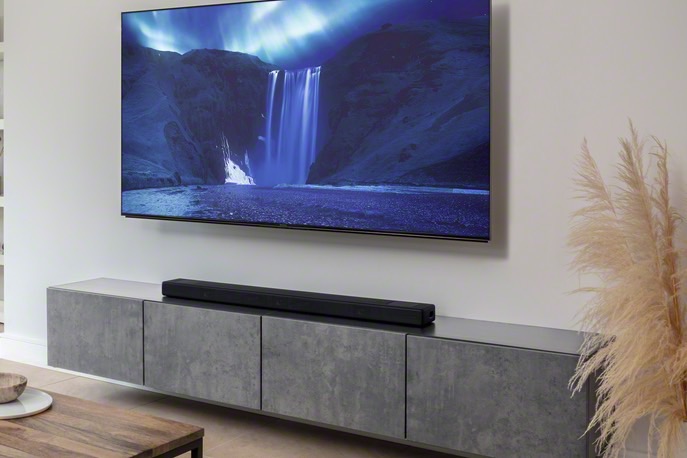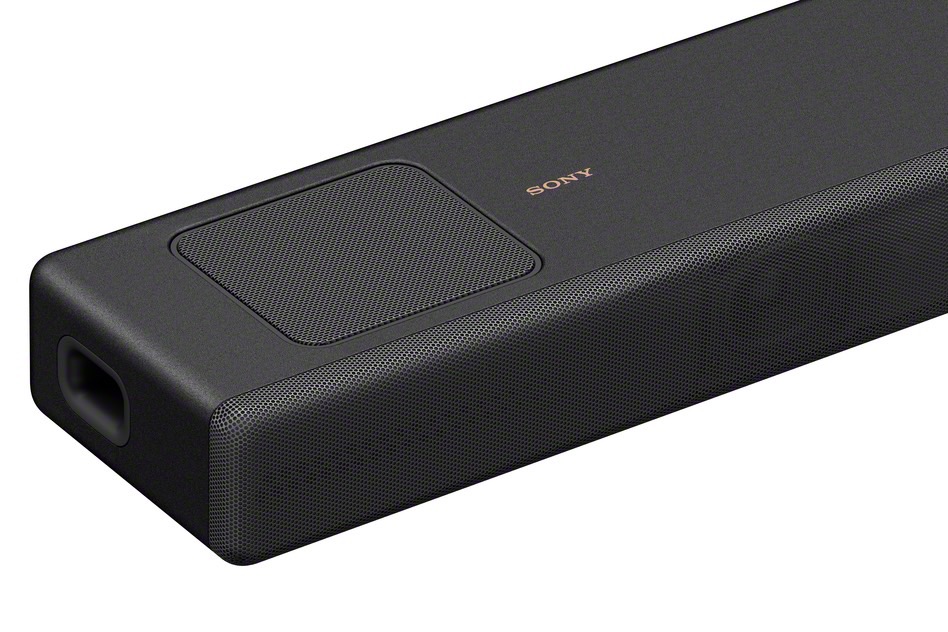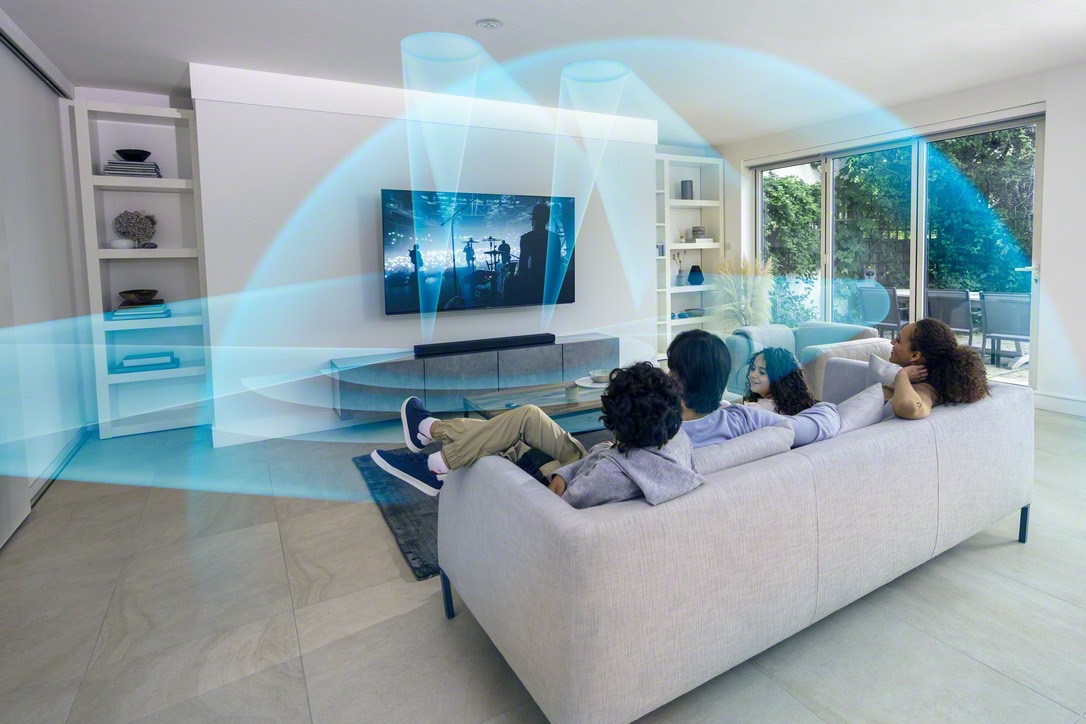Hot on the heels of the release of its pricey $1,300 flagship HT-A7000 Dolby Atmos soundbar, Sony is back with a more affordable option. The $900 HT-A5000 packs almost as many features as its more expensive sibling, but does so in a smaller, lighter, and more wallet-friendly form. At that price, it goes head-to-head with the $800 Sonos Arc and the newly released $900 Bose Smart Soundbar 900, both of which can add Dolby Atmos to any TV in your home. The A5000 is expected to be available in the early fall 2021.
At 47.75 inches wide, the A5000 is only slightly narrower than the 51-inch A7000, and Sony has still managed to squeeze nine drivers into the cabinet, including two up-firing height drivers, two subwoofers, two front-firing beam tweeters, and dedicated drivers for left, right, and center channels. This arrangement lets the soundbar deliver a full 5.1.2-channel surround sound experience. It’s also compatible with Dolby Atmos and DTS:X. Even when you’re not listening to content created in these 3D immersive formats, Sony’s Vertical Surround Engine can effectively upscale other kinds of audio into a 360-degree sound field.

Speaking of 360 sound, the A5000 works with Sony’s 360 Reality Audio (360 RA) format, which you can stream from services like Tidal HiFi and Amazon Music HD. It’s also compatible with lossless hi-res audio from these same services, or personal music from your home network. You can also load the music files onto a thumb drive or hard drive, which can be connected to the included USB port.
Other ports include an HDMI ARC/eARC for connecting the A5000 to your TV, an optical connection in case your TV doesn’t support ARC or eARC, and a single
If you’re fortunate enough to own one of Sony’s compatible Bravia TVs like its flagship
On the wireless front, the list is comprehensive: You get Apple AirPlay, Google Chromecast, Bluetooth, and Spotify Connect. You also get Sony’s LDAC Bluetooth codec so you can stream high-quality audio from a compatible device without needing Wi-Fi. The A5000 can also be used as a Bluetooth transmitter — just connect a set of
Finally, the A5000 can be augmented for better low-end bass with your choice of two wireless subwoofers: The $700 SA-SW5 or the $400 SA-SW3, plus you can improve surround sound if you spring for the optional $350 SA-RS3S rear wireless speakers.
Interested in upgrading your TV’s sound? We’ve got a full guide to the best soundbars.
Update: We had previously noted that the HT-A5000 uses Sony’s 360 Spatial Sound Mapping technology when you spring for the optional $350 SA-RS3S rear wireless speakers. This was based on an early briefing from Sony, which the company has now corrected: 360 Spatial Sound Mapping is not available on the HT-A5000. It is a feature of the step-up HT-A7000.
Editors' Recommendations
- TCL’s 2024 Dolby Atmos soundbars have room calibration and start at $180
- Sony’s best soundbars are reborn as the Bravia Theater Bar 8, Bar 9, and Quad
- TCL goes all-in on Dolby Atmos with its first 7.1.4-channel soundbar
- You Asked: Dolby Atmos and EDID, minimalist soundbars, and HDMI 2.1
- Is Dolby Atmos FlexConnect a potential soundbar killer?





